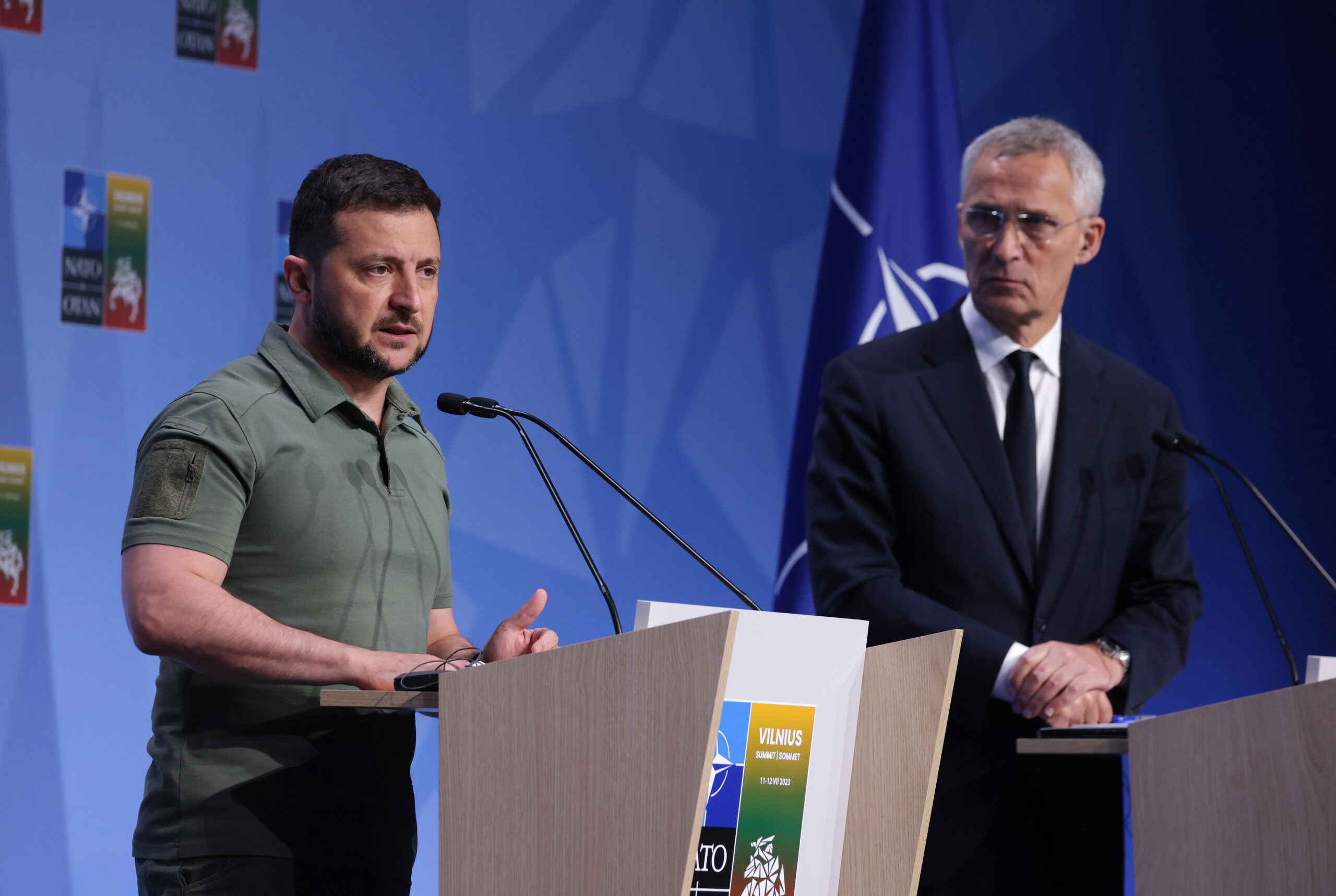We assess that Ukraine has a less than even chance of joining NATO over the next five years.
This assessment was issued to clients of Dragonfly’s Security Intelligence & Analysis Service (SIAS) on 21 July 2023.
- The prospect of Ukraine joining NATO appears low during the next five years, in our assessment
- This outcome is unlikely to affect the course of Ukraine’s ongoing offensive but will incentivise Russia to extend the war
- The absence of a definite path into NATO is likely to hinder Ukraine’s post-war reconstruction plans
NATO’s postponement of a membership invitation at its summit on 11-12 July suggests that leading members remain wary of becoming embroiled in any future conflict with Russia on Ukraine’s behalf. Yet, the summit offers modest opportunities for Ukraine to deepen cooperation with NATO, via the new NATO-Ukraine Council, for example. Nonetheless, an apparent indefinite delay in Ukraine’s membership of NATO is likely to undermine the country’s reconstruction plans.
NATO hesitates on Ukraine invitation
At its recent summit in Vilnius, Lithuania, NATO postponed any firm decision on Ukraine’s membership of the Alliance. NATO’s broad stance is that it intends to invite Ukraine to join, according to the official communique, but only once hostilities with Russia have ended, and only when ‘Allies agree and conditions are met’. It was not immediately clear what these conditions are. But they probably relate to further reform of Ukraine’s political and military institutions. NATO provided no indicative time scale for Ukraine to meet the conditions, a further sign that the organisation is putting off a decision.
But members’ support for its military remains strong
Our assessment of Ukraine’s ongoing offensive – that it is likely to make territorial gains, but no strategic breakthrough – is unaffected by the NATO summit’s ambivalent outcome on Ukraine’s membership. Interim ‘security guarantees’ proposed by the G7 group of rich industrial countries to coincide with the NATO summit promised to formalise the existing situation on the supply of arms, training and intelligence. Western assistance has helped Ukraine greatly over the past 16 months, not only to survive as a functioning state but even to push back a much larger and better-resourced enemy.
Recent promises of more and better ammunition, weapons and training by individual governments are likely to boost Ukraine’s efforts to retake Russian-held territory in the east and southeast. Its current offensive has been slow so far, owing to insufficient air cover, and to the extensive defences that Russia has built there, which includes heavy mining. To try to expedite progress, President Biden on 7 July confirmed that the US would deliver cluster munitions to Ukraine. And on 11 July, President Macron announced that France would send long-range cruise missiles.
It is plausible that the absence of an invitation to Ukraine to join NATO until after the war creates an incentive for Russia to keep fighting. But the incentive to keep fighting would probably exist even if Russia were to suffer another major military setback, again losing substantial occupied lands. That is, the aim of restoring political control over Ukraine is existential to the Russian government and is central to its worldview. The proposals to come out of the Vilnius summit are unlikely to have altered the basic calculus of the current Russian leadership on this.
Summit offers modest means for developing co-operation
Ukraine’s NATO membership is now essentially a political issue for NATO members. The Vilnius summit explicitly recognised Ukraine’s long-term aspiration of joining NATO. But before Russia’s full-scale invasion, the US had seemed to pull back on its support for that goal. The summit also offered Ukraine some modest opportunities to deepen NATO-Ukraine ties, which would put it in a better position to achieve membership quickly once a formal invitation has been made. This includes:
- An ‘upgrade’ of the body governing NATO-Ukraine relations, giving Ukraine the right to summon meetings, and to participate in consultation and security decisions of joint concern, including in a crisis
- The elimination of the Membership Action Plan (MAP) for Ukraine – a prerequisite for NATO membership involving the alignment of political and military standards
This last measure should help to speed up the process for Ukraine to join the Alliance, but only once that process begins formally. However, the war with Russia is unlikely to end in the near term (up to one year); and key NATO members, such as Germany and the US, appear hesitant to extend an unqualified invitation. This is why we assume that Ukraine’s actual membership is unlikely over the medium term (five years), at least.
Uncertainty on national security would weigh on reconstruction
The absence of a clear, concrete path into NATO is likely to hamper post-war reconstruction. This is because the perception that Russia would use any ceasefire or peace deal to rearm, then attack again later, would be likely to jeopardise Ukraine’s chances of attracting investment on the scale it needs. Also, many Ukrainians abroad would probably be deterred from returning home with their families to join the workforce while Ukraine’s main cities remain subject to periodic missile or drone attacks from Russia.
Image: Ukrainian President, Volodymyr Zelensky, and NATO Secretary General, Jens Stoltenberg, speak to the media on the second day of the 2023 NATO Summit in Vilnius, Lithuania, on 12 July 2023. Photo by Sean Gallup via Getty Images.



